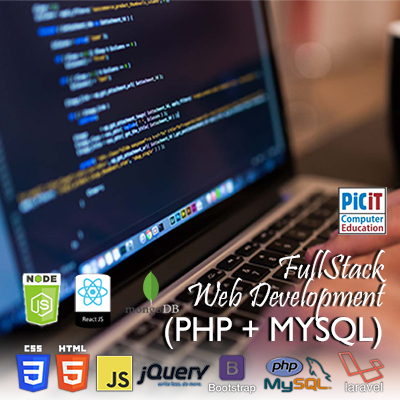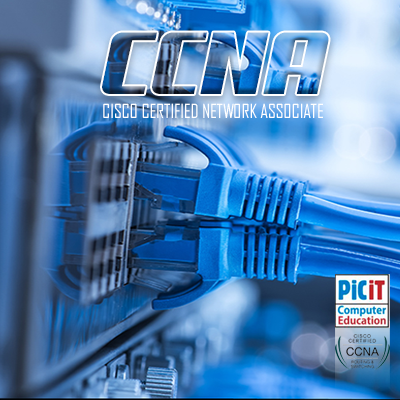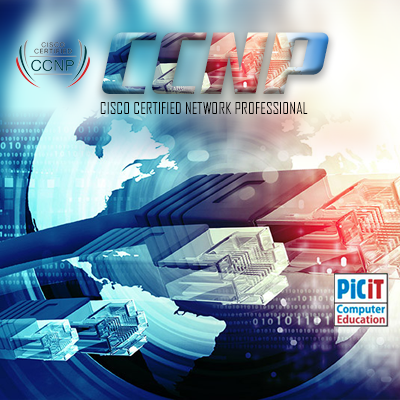Why Cisco CCNA Routing & Switching Training?
Cisco CCNA Routing & Switching Training is designed for those students or professional who has no knowledge about Networking. In Our CCNA Routing & Switching Training will recognize you the purpose and functions of various network devices such as routers, switches, bridges and hubs. In this Cisco CCNA Routing & Switching Training Lahore you will learn how to get CCNA certification.WHY NETWORKS?
Do you want a bright career in computer field? Are you searching for a profession, which can lead you to 6-digit salary? If you want to live in high tech city or in any developed country then Networking is your destiny. Cisco, Juniper and Huawei are main manufacturers of routers and switches but Cisco is well known and leader in networking products.WHY CCNA Training?
Cisco has major share in networking market, more than 70% of equipment deployed in the world belongs to Cisco. Therefore, if you want to start your career in computer networks than Cisco certifications are your first step. You can also think of MCSE but keep in mind if you want networking field and especially core side of the networks rather than system side than you must go for CCNA. MCSE and Linux certification are for system administration. CCNA is first certification towards cisco highly and most valuable certification CCIE. WHO CAN ATTEND? There is no prerequisite for CCNA but you must have basic knowledge of computer and networks. JOB OPPORTUNITIES. After completing your CCNA certification you will be able to handle small to medium sized LAN/WAN networks. Your job opportunities will be in:- Banks
- Hospitals
- ISPs (Internet Service Providers)
- Call center
- Educational institutions
- And many more
WHY PiCiT for Cisco CCNA Routing & Switching Training Lahore?
We provide- Individual attention
- Small size of class so that each student get ROI (Return of Investment) max. 12 students
- Real Equipment (So that in real field students do not face any fear)
- Affordable fee structure
- CCAI (Cisco Certified Authorized Instructors) will teach class
- We have CCIE Trainers
- We teach through Cisco recommended curriculum.
- Job counseling and recommendations.
- Operation of IP Data Networks
- Recognize the purpose and functions of various network devices such as routers, switches, bridges and hubs
- Select the components required to meet a given network specification
- Identify common applications and their impact on the network
- Describe the purpose and basic operation of the protocols in the OSI and TCP/IP models
- Predict the data flow between two hosts across a network
- Identify the appropriate media, cables, ports, and connectors to connect Cisco Network devices to other network devices and hosts in a LAN
- LAN Switching Technologies
- Determine the technology and media access control method for Ethernet networks
- Identify basic switching concepts and the operation of Cisco switches
- 2.2.a Collision Domains
- 2.2.b Broadcast Domains
- 2.2.c Ways to switch
- 2.2.c (i) Store
- 2.2.c (ii) Forward
- 2.2.c (iii) Cut through
- 2.2.d CAM Table
- 2.2.3 Configure and verify initial switch configuration including remote access management
- 2.3.a host name
- 2.3.b mgmt ip address
- 2.3.c ip default-gateway
- 2.3.d local user and password
- 2.3.e enable secret password
- 2.3.f console and VTY logins
- 2.3.g exec-timeout
- 2.3.h service password encryption
- 2.3.i copy run start
- 2.4 Verify network status and switch operation using basic utilities such as
- 2.4.a ping
- 2.4.b telnet
- 2.4.c SSH
- 2.5 Describe how VLANs create logically separate networks and the need for routing between them
- 2.5.a Explain network segmentation and basic traffic management concepts
- 2.6 Configure and verify VLANs
- 2.7 Configure and verify trunking on Cisco switches
- 2.7a dtp (topic)
- 2.7.b auto-negotiation
- 2.8 Identify enhanced switching technologies
- 2.8.a RSTP
- 2.8.b PVSTP
- 2.8.c Ether channels
- 2.9 Configure and verify PVSTP operation
- 2.9.a Describe root bridge election
- 2.9.b Spanning tree mode
- 3.0 IP Addressing (IPv4/IPv6)
- 3.1 Describe the operation and necessity of using private and public IP addresses for Ipv4 addressing
- 3.2 Identify the appropriate IPv6 addressing scheme to satisfy addressing requirements in a LAN/WAN environment
- 3.3 Identify the appropriate IPv4 addressing scheme using VLSM and stigmatization to satisfy addressing requirements in a LAN/WAN environment
- 3.4 Describe the technological requirements for running IPv6 in conjunction with Ipv4
- 3.4.a dual stack
- 3.5 Describe IPv6 addresses
- 3.5.a global unicast
- 3.5.b multicast
- 3.5.c link local
- 3.5.d unique local
- 3.5.e eui 64
- 3.5.f auto-configuration
- 4.0 IP Routing Technologies
- 4.1 Describe basic routing concepts
- 4.1.a packet forwarding
- 4.1.b router lookup process
- 4.1.c Process Switching/Fast Switching/CEF
- 4.2 Configure and verify utilizing the CLI to set basic Router configuration
- 4.2.a hostname
- 4.2.b local user and password
- 4.2.c enable secret password
- 4.2.d console & VTY logins
- 4.2.e exec-timeout
- 4.2.f service password encryption
- 4.2.g Interface IP Address
- 4.2.g(I) loopback
- 4.2.h banner
- 4.2.i motd
- 4.2.j copy run start
- 4.3 Configure and verify operation status of a device interface
- 4.3.a Serial
- 4.3.b Ethernet
- 4.4 Verify router configuration and network connectivity using
- 4.4.a ping
- 4.4.a(i) extended
- 4.4.b trace route
- 4.4.c telnet
- 4.4.d SSH
- 4.4.e sh cdp neighbors
- 4.4.a ping
- 4.5 Configure and verify routing configuration for a static or default route given specific routing requirements
- 4.6 Differentiate methods of routing and routing protocols
- 4.6.a Static vs. dynamic
- 4.6.b Link state vs. distance vector
- 4.6.c next hop
- 4.6.d ip routing table
- 4.6.e Passive Interfaces (how they work)
- 4.6.f Admin distance
- 4.6.g split horizon
- 4.6.h metric
- 4.7 Configure and verify OSPF
- 4.7.a Benefit of single area
- 4.7.b Configure OSPv2
- 4.7.c Configure OSPv3
- 4.7.d Router ID
- 4.7.e Passive Interface
- 4.7.f Discuss multi-area OSPF
- 4.7.g Understand LSA types and purpose
- 4.8 Configure and verify interVLAN routing (Router on a stick)
- 4.8.a sub interfaces
- 4.8.b upstream routing
- 4.8.c encapsulation
- 4.9 Configure SVI interfaces
- 4.10 Manage Cisco IOS Files
- 4.10.a Boot Preferences
- 4.10.b Cisco IOS Images (15)
- 4.10.c Licensing
- 4.10.c(i) Show license
- 4.10.c(ii) Change license
- 4.11 Configure and verify EIGRP (single AS)
- 4.11.a Feasible Distance / Feasible Successors / Administrative distance
- 4.11.b Feasibility condition
- 4.11.c Metric composition
- 4.11.d Router ID
- 4.11.e Auto summary
- 4.11.f Path Selection
- 4.11.g Load Balancing
- 4.11.g(i) Unequal
- 4.11.g (ii)Equal
- 5.0 IP Services
- 5.1 Configure and verify DHCP (IOS Router)
- 5.1.a Configuring router interfaces to use DHCP
- 5.1.b DHCP options (Basic overview and functionality)
- 5.1.c Excluded addresses
- 5.1.d Lease time
- 5.2 Describe the types, features, and applications of ACLs
- 5.2.a standard (editing and sequence numbers)
- 5.2.b extended
- 5.2.c named
- 5.2.d numbered
- 5.2.e Log option
- 5.3 Configure and verify ACLs in a network environment
- 5.3.a named
- 5.3.b numbered
- 5.3.c Log option
- 5.4 Identify the basic operation of NAT
- 5.4.a purpose
- 5.4.b pool
- 5.4.c static
- 5.4.d 1 to 1
- 5.4.e overloading
- 5.4.f source addressing
- 5.4.g one way NAT
- 5.5 Configure and verify NAT for given network requirements
- 5.6 Configure and verify NTP as a client
- 5.7 Recognize High availability (FHRP)
- 5.7.a VRRP
- 5.7.b HSRP
- 5.7.c GLBP
- 5.8 onfigure and verify syslog
- 5.8.a Utilize syslog output
- 5.9 Describe SNMP v2 and v3
- 6.0 Network Device Security
- 6.1 Configure and verify network device security features
- 6.1.a Device password security
- 6.1.b Enable secret vs.enable
- 6.1.c Transport
- 6.1.c.1 disable telnet
- 6.1.c.2 SSH
- 6.1.d VTYs
- 6.1.e physical security
- 6.1.f service password
- 6.1.g Describe external authentication methods
- 6.2 Configure and verify Switch Port Security
- 6.2.a Sticky MAC
- 6.2.b MAC address limitation
- 6.2.c static/dynamic
- 6.2.d violation modes
- 6.2.d (i) err disable
- 6.2.d(ii) shutdown
- 6.2.d(iii) protect restrict
- 6.2.e Shutdown unused ports
- 6.2.f err disable recovery
- 6.2.g Assign unused ports in unused VLANs
- 6.2.h Putting Native VLAN to other than VLAN 1
- 6.3 Configure and verify ACLs to filter network traffic
- 6.4 Configure and verify ACLs to limit telnet and SSH access to the router
- 7.0 Troubleshooting
- 7.1 Troubleshoot and correct common problems associated with IP addressing and host configurations
- 7.2 Troubleshoot and resolve VLAN problems
- 7.2.a Identify that VLANs are configured
- 7.2.b Verify port membership correct
- 7.2.c Correct IP address configured
- 7.3 Troubleshoot and resolve trunking problems on Cisco switches
- 7.3.a Verify correct trunk states
- 7.3.b Verify correct encapsulation configured
- 7.3.c Correct VLANs allowed
- 7.4 Troubleshoot and resolve ACL issues
- 7.4.a Verify statistics
- 7.4.b Verify permitted networks
- 7.4.c Verify direction
- 7.4.c (i) Interface
- 7.5 Troubleshoot and resolve Layer 1 problems
- 7.5.a Framing
- 7.5.b CRC
- 7.5.c Runts
- 7.5.d Giants
- 7.5.e Dropped packets
- 7.5.f Late collisions
- 7.5.g Input /output errors
- 7.6 Identify and correct common network problems
- 7.7 Troubleshoot and resolve spanning tree operation issues
- 7.7.a Verify root switch
- 7.7.b Verify priority
- 7.7.c Verify mode is correct
- 7.7.d Verify port states
- 7.8 Troubleshoot and resolve routing issues
- 7.8.a Verify routing is enabled (SHIP protocols)
- 7.8.b Verify routing table is correct
- 7.8.c Verify correct path selection
- 7.9 Troubleshoot and resolve OSPF problems
- 7.9.a Verify neighbor adjacencies
- 7.9.b Verify hello and dead timers
- 7.9.c Verify OSPF area
- 7.9.d Verify interface MTU
- 7.9.e Verify network types
- 7.9.f Verify neighbor states
- 7.9.g Review OSPF topology table
- 7.10 Troubleshoot and resolve EIGRP problems
- 7.10.a Verify neighbor adjacencies
- 7.10.b Verify AS number
- 7.10.c Verify load balancing
- 7.10.d Split horizon
- 7.11 Troubleshoot and resolve inter VLAN routing problems
- 7.11.a Verify connectivity
- 7.11.b Verify encapsulation
- 7.11.c Verify subnet
- 7.11.d Verify native VLAN
- 7.11.e Port mode trunk status
- 7.12 Troubleshoot and resolve WAN implementation issues
- 7.12.a Serial interfaces
- 7.12.b Frame relay
- 7.12.c PPP
- 7.13 Monitor NetFlow statistics
- 7.14 Troubleshoot EtherChannel problems
- 8.1 Identify different WAN Technologies
- 8.1.a Metro Ethernet
- 8.1.b VSAT
- 8.1.c Cellular 3G/4G
- 8.1.d MPLS
- 8.1.e T1/E1
- 8.1.f ISDN
- 8.1.g DSL
- 8.1.h Frame relay
- 8.1.i Cable
- 8.1.j VPN
- 8.2 Configure and verify a basic WAN serial connection
- 8.3 Configure and verify a PPP connection between Cisco routers
- 8.4 Configure and verify frame relay on Cisco routers
- 8.5 Implement and troubleshoot PPPoE

Microsoft Office Course
Microsoft Office Training | IT-Basic is designed for those students or professional who has no knowledge about Microsoft Office Application

Graphic Designing
Graphic Designing Training Course is designed for those students or professional who has no knowledge about Graphic Designing

AutoCAD
AutoCAD Training Course is designed for those students or professional who has no knowledge about AutoCAD.

3Ds Max
3D studio max training classes in Lahore are designed for those students or professionals who do not know 3DS max training Application

Fullstack Web Development.
Fullstack Web Development Training in Lahore is designed for those students or professional who has Basic knowledge about Web Developmen

Web Development
Web Development Training course is designed for those students or professional who has no knowledge about Web Developmen

Mobile Repairing
In Our Mobile Phone Training course will teach you How to disassemble & assemble different types of cell phones, Identifying different parts of GSM and CDMA handsets, Work of different parts & ICs etc

Web Designing
n Our Web Designing Training will teach you HTML | CSS | Java Scripting | JQuery | Adobe DreamWeaver | BootStrap. In this Web Designing course you will learn how to Build full Responsive websites

Computer Hardware
Computer Hardware Technician training course covers the fundamentals of computer, Computer Systems, installation and maintenance of PCs and laptops

Video Editing
In Our Video Editing Training course in Lahore will teach you Camtasia | Filmora | Adobe Premier | Adobe Sound Forge. In this Video Editing Training Course You’ll create professional videos with the equipment you already have using a step by step, easy-to-use method

Spoken English
Spoken English Language Training Course in Lahore is designed for those students or professional who has no knowledge about Spoken English.

Motion Graphics
In this Motion Graphics Training Course you will Create Motion Graphics to enhance your videos using a step by step, easy-to-use method

MCSE Certification
In Our MCSE 2016 training will teach you MCSE – Server Infrastructure. In this Microsoft MCSE 2016 certification Lahore you will learn how to configure high end network infrastructure

Cisco CCNA certification
Cisco CCNA Routing & Switching Training is designed for those students or professional who wants to pursue there career in networking..

Cisco CCNP certification
In Our Cisco CCNP routing & switching training course will teach you Explain complex network requirements and design models for implementing advanced routing services in an enterprise network

